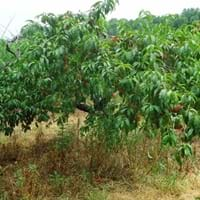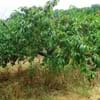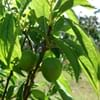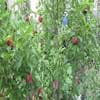Life Span
Perennial
Annual and Perennial
Type
Fruit
Tender Perennial
Origin
China
South Africa
Types
Freestone, Clingstone
Osteospermum acanthospermum, Osteospermum amplectens, Osteospermum burttianum
Habitat
Temperate Regions, Warmer regions
Coastal Regions, Sandy areas, Terrestrial
USDA Hardiness Zone
5-9
10-11
AHS Heat Zone
9-1
Not Available
Sunset Zone
Not Available
8, 9, 12, 13, 14, 15, 16, 17, 18, 19, 20, 21, 22, 23, 24
Habit
Upright/Erect
Clump-Forming
Flower Color
Pink
White, Purple, Blue Violet
Flower Color Modifier
Bicolor
Bicolor
Fruit Color
Yellow, Red, Pink, Peach
Not Available
Leaf Color in Spring
Green
Green
Leaf Color in Summer
Green
Green
Leaf Color in Fall
Green
Green, Blue Green
Leaf Color in Winter
Light Green
Light Green
Leaf Shape
Elliptic
Irregular
Plant Season
Spring, Summer, Fall
Spring, Summer, Fall
Sunlight
Full Sun
Full Sun, Partial Sun
Type of Soil
Loam, Sand
Loam
The pH of Soil
Acidic, Neutral, Alkaline
Neutral
Soil Drainage
Well drained
Well drained
Bloom Time
Spring
Late Spring, Early Summer, Summer, Late Summer, Early Fall, Fall
Tolerances
Drought
Drought
Where to Plant?
Container, Ground, Pot
Container
How to Plant?
Grafting
Seedlings, Stem Cutting
Plant Maintenance
Medium
Medium
Watering Requirements
Requires regular watering, Requires watering in the growing season
Do Not over Water, Keep ground moist
In Summer
Lots of watering
Lots of watering
In Spring
Moderate
Moderate
In Winter
Average Water
Average Water
Soil pH
Acidic, Neutral, Alkaline
Neutral
Soil Type
Loam, Sand
Loam
Soil Drainage Capacity
Well drained
Well drained
Sun Exposure
Full Sun
Full Sun, Partial Sun
Pruning
Prune every year, Prune to stimulate growth, Remove damaged leaves, Remove dead branches, Remove dead leaves, Remove hanging branches
Remove damaged leaves, Remove dead branches, Remove dead leaves
Fertilizers
Compost, fertilize in spring, fertilize in summer, Nitrogen, Phosphorous
All-Purpose Liquid Fertilizer
Pests and Diseases
Bacterial Canker, Bacterial leaf spot, Crown gall, Leaf curl, Red blotch, Rust, Scab
Red blotch
Plant Tolerance
Drought
Drought
Flower Petal Number
Single
Single
Foliage Texture
Medium
Medium
Foliage Sheen
Glossy
Not Available
Attracts
Birds
Bees, Birds, Butterflies
Allergy
Avoid during Pregnancy
Not Available
Aesthetic Uses
Not Used For Aesthetic Purpose
Beautification, Showy Purposes
Beauty Benefits
Good for skin and hair
Not Available
Environmental Uses
Air purification, Food for animals, Food for birds, Food for insects, Nesting sites for birds, Prevent Soil Erosion
Air purification
Medicinal Uses
Cancer, Diabetes, Heart problems, Nutrients, Skin Disorders
Not Applicable
Part of Plant Used
Fruits
Flowers
Other Uses
Cosmetics, Used As Food, Used for its medicinal properties
Used as Ornamental plant
Used As Indoor Plant
No
No
Used As Outdoor Plant
Yes
Yes
Garden Design
Fruit / Fruit Tree
Bedding Plant, Container, Cutflower, Foundation, Groundcover, Hanging Basket, Mixed Border, Rock Garden / Wall
Botanical Name
PRUNUS persica 'Saturn'
OSTEOSPERMUM fruticosum
Common Name
Donut Peach, Peach, Saturn Peach, Yellow Freestone Peach
Shrubby Daisybush, Trailing African Daisy
In Hindi
डोनट पीच
Blue Eyed Daisy Plant
In German
Donut Pfirsich
Blue Eyed Daisy Pflanze
In French
Donut Peach
Blue Eyed Daisy Plante
In Spanish
Donut Peach
Planta observada azul de la margarita
In Greek
ντόνατ Ροδάκινο
Μπλε Eyed Daisy Φυτών
In Portuguese
Donut Peach
Planta da margarida de olhos azuis
In Polish
Donut Peach
Blue Eyed Daisy roślin
In Latin
Donut Peach
Daisy Blue Eyed Planta
Phylum
Magnoliophyta
Magnoliophyta
Class
Magnoliopsida
Magnoliopsida
Family
Rosaceae
Asteraceae
Genus
Prunus
Osteospermum
Clade
Angiosperms, Eudicots, Rosids
Angiosperms, Asterids, Eudicots
Tribe
Not Available
Calenduleae
Subfamily
Cetoniinae
Asteroideae
Number of Species
Not Available
Season and Care of Donut Peach and Blue Eyed Daisy Plant
Season and care of Donut Peach and Blue Eyed Daisy Plant is important to know. While considering everything about Donut Peach and Blue Eyed Daisy Plant Care, growing season is an essential factor. Donut Peach season is Spring, Summer and Fall and Blue Eyed Daisy Plant season is Spring, Summer and Fall. The type of soil for Donut Peach is Loam, Sand and for Blue Eyed Daisy Plant is Loam while the PH of soil for Donut Peach is Acidic, Neutral, Alkaline and for Blue Eyed Daisy Plant is Neutral.
Donut Peach and Blue Eyed Daisy Plant Physical Information
Donut Peach and Blue Eyed Daisy Plant physical information is very important for comparison. Donut Peach height is 370.00 cm and width 370.00 cm whereas Blue Eyed Daisy Plant height is 36.00 cm and width 51.00 cm. The color specification of Donut Peach and Blue Eyed Daisy Plant are as follows:
Donut Peach flower color: Pink
Donut Peach leaf color: Green
Blue Eyed Daisy Plant flower color: White, Purple and Blue Violet
- Blue Eyed Daisy Plant leaf color: Green
Care of Donut Peach and Blue Eyed Daisy Plant
Care of Donut Peach and Blue Eyed Daisy Plant include pruning, fertilizers, watering etc. Donut Peach pruning is done Prune every year, Prune to stimulate growth, Remove damaged leaves, Remove dead branches, Remove dead leaves and Remove hanging branches and Blue Eyed Daisy Plant pruning is done Remove damaged leaves, Remove dead branches and Remove dead leaves. In summer Donut Peach needs Lots of watering and in winter, it needs Average Water. Whereas, in summer Blue Eyed Daisy Plant needs Lots of watering and in winter, it needs Average Water.





